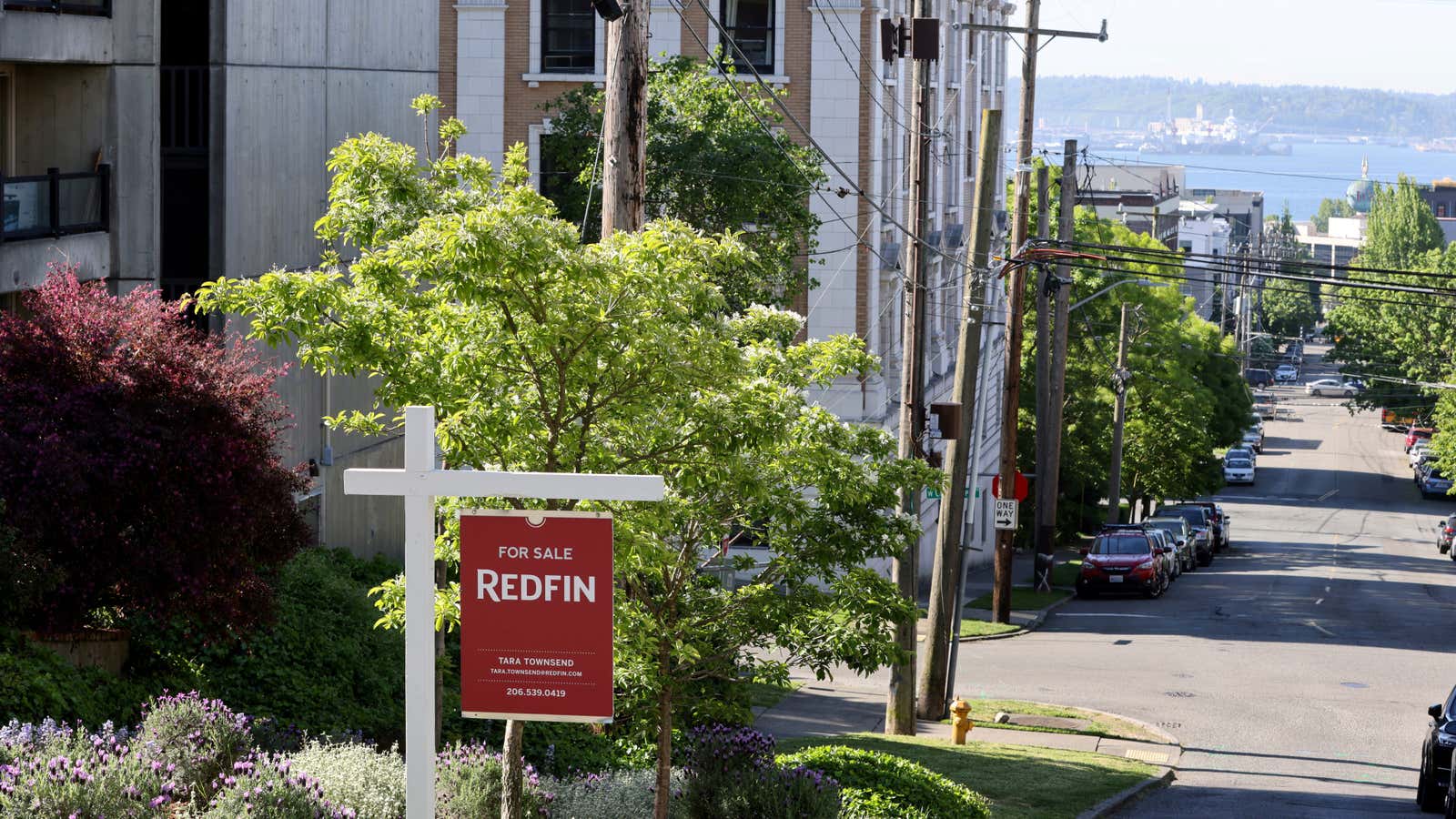The window of time when American home buyers can jump on potential properties is more narrow than ever given the record pace of home sales, according to a new report released today (Nov. 11) by the National Association of Realtors.
The survey of recent US home buyers shows properties stayed on the market for a median period of just one week before going under contract between June 2020 and 2021, up from three weeks the previous year. This is the lowest recorded median time on the market since NAR started collecting data in 1989.
In another sign of a historically tight real estate market, most sellers are now collecting 100% or more of the asking price for their homes, a shift from previous years when Americans tended to get slightly less than what was originally listed.
Homebuyers face a historically tight housing market
Demand for housing slowed down considerably during the first months of the covid-19 pandemic but came roaring back last summer as many people, realizing they would be working remotely for some time, began looking for new homes, typically farther away from cities. Demand was bolstered by historically low interest rates and millennial buyers coming into the market for the first time.
“There is a lot of demand right now,” says Jessica Lautz, vice president of demographics and behavioral insights at NAR. “People who didn’t expect to move in the last year, the pandemic has really driven them to make that choice.”
At the same time, the US housing supply shrunk as construction companies battled supply-chain disruptions and labor shortages. Freddie Mac estimated the US had a housing supply deficit of 3.8 million units last year, meaning an additional 3.8 million homes would need to be built to catch up with demand.
A worsening supply shortage, coupled with historic demand, caused home prices to soar during the pandemic, a trend that has not yet slowed. The average US home sold for $453,300 between June and September, according to US Census Bureau figures, up from $397,800 during the same period last year. Holding on to a home is also becoming harder for low-income Americans—the number of low-priced homes on the market rose by 13% last quarter, according to a recent report from Redfin, suggesting these homeowners can no longer afford to pay their mortgages.
Barriers to entry for homeownership persist
The NAR data show just how competitive the housing market has become. More than 60% of US homes stayed on the market for two weeks or less from June 2020 to 2021.
These conditions are particularly challenging for first-time homebuyers, Lautz says. If they’re trying to stay within a certain budget, “an all-cash buyer can really swoop in and not have an issue with home prices.” While the share of first-time homebuyers ticked up slightly last year, from 31% to 34%, the majority surveyed by NAR said they had to make a financial sacrifice to buy a home.
What’s more, 82% of first-time homebuyers were white, reflecting a persisting racial gap in US homeownership. Black Americans have the lowest rates of homeownership, according to the Census Bureau, with 44% owning a home compared to 74% of their white counterparts as of this September. During the pandemic more brokers have started selling homes before they’re even listed, a practice that some housing experts argue further shuts non-white buyers out of the market.
Lautz says she doesn’t expect the frenzied real estate market to slow down anytime soon. Home sales did fall by 2% in August compared with July, but median home prices were up by nearly 15% from 2020.
